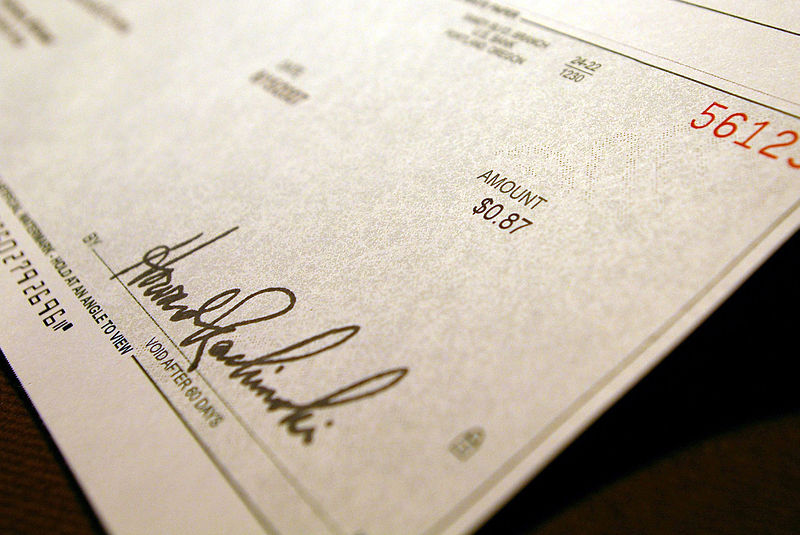How the SBA’s Paycheck Protection Program Can Help Your Business

Courtesy Michael Kooiman, Flickr
The U.S. Congress, as part of the CARES Act, has created the Paycheck Protection Program (“PPP”) to provide loan funds to small businesses to increase employee payroll retention during the COVID-19 pandemic. The program even offers forgiveness for the loan under certain conditions.
Small businesses under 500 employees (including sole proprietorships, independent contractors, and self-employed persons), private non-profit organizations, or 501(c)(19) veterans’ organizations, and tribal businesses are eligible under this program if they meet certain program requirements.
The SBA is also waiving affiliation standards for small businesses in the hotel and food industries or franchises in the SBA’s franchise directory. What this means is small businesses in the hospitality and food industry, along with franchises approved by the SBA that have more than one location, will be eligible at the store/location level if that location employs less than 500 workers.
Where To Use
Applicants can use a PPP loan for
- payroll costs, including benefits
- interest on non-federal mortgage obligations incurred before February 15, 2020
- rent under a lease agreement in force prior to February 15, 2020, and
- utilities, with service that began before February 15, 2020.
Payroll costs and benefits include
- salary
- bonuses
- vacation time
- parental or family leave
- medical or sick leave
- allowance for separation or dismissal
- group healthcare
- insurance premiums
- retirement benefits, and
- state and local taxes.
Application Process
Starting April 3, 2020, small businesses and sole proprietorships can apply for a Paycheck Protection Program loan. Independent contractors and self-employed individuals can also apply starting on April 10, 2020.
The SBA is offering PPP loans through June 30, 2020 or until the funds run out, whichever occurs first.
To apply for a PPP loan, a Borrower must seek out an existing SBA 7(a) lender. If a Borrower is not aware of an SBA 7(a) lender, they should first contact the bank they currently use and see if their bank qualifies. Otherwise, Borrowers can go to http://www.SBA.gov/pa and look at “Loan Volume Report” to see what banks are lending SBA 7(a) loans in Eastern PA (look under heading “From Our Office” of the page).
Please be aware that not all banks who are SBA 7(a) lenders are offering this loan, so it may take some work to find one.
The SBA included a sample application form that you can review to know what information the SBA needs. To apply, a business will need at minimum:
- the average monthly payroll
- the number of jobs
- the purpose of the loan
- applicant information (EIN/SSN, address, owner name, etc.)
- the operating agreements/organizational documents
- payroll documentation (As each lender will require different documentation, we recommend pulling everything for the past year in preparation of what the lender will ask for), and
- certifying information on the business and each owner that owns more than 20% of the company, including:
- that current economic uncertainty makes the loan necessary
- that they will use the funds to retain employees and maintain payroll or make mortgage payments, lease payments, or utility payments for eight weeks following the loan, and
- that they have not and will not receive another loan under the PPP program between February 15, 2020 and December 31, 2020.
Loan Terms
The SBA will defer your loan payments for six months, but interest will continue to accrue. However, they do not require any collateral or personal guaranties from Borrower. Also, neither the government nor the lenders will be able to charge any fees related to this loan.
The maturity on a PPP loan is two years, and the interest rate is 1%.
Forgiveness
The SBA will 100% forgive the loans upon certain conditions.
A borrower will owe money when the loan is due and payable if they use loan funds for anything but payroll costs, mortgage interest, rent, and utility payments during the eight weeks after they receive the loan.
However, due to the high use of this program, a borrower must use 75% of the loan for payroll costs. The SBA also caps payroll costs at $100,000.00 on an annualized basis for each employee.
In addition, the SBA may reduce or eliminate forgiveness for a borrower if they
- do not maintain their staff and payroll
- reduce their full-time employee headcount
- reduce salaries by more than 25%, or
- fail to re-hire their employees
Borrowers have until June 30, 2020 to restore their fulltime employment and salary levels for any changes made between February 15, 2020 and April 26, 2020.
Please note that lenders are overwhelmed with applications for this program. Apply early, but be patient on the loan turnaround.
Additionally, the SBA does not require a Borrower to look for funds elsewhere prior to applying to this program. This is known as the “Credit Elsewhere” requirement, and it has been waived under the CARES act for the SBA PPP and SBA EIDL programs.
If employers need more assistance than what the Paycheck Protection Program offers, they may apply for an Economic Injury Disaster Loan directly through SBA.
